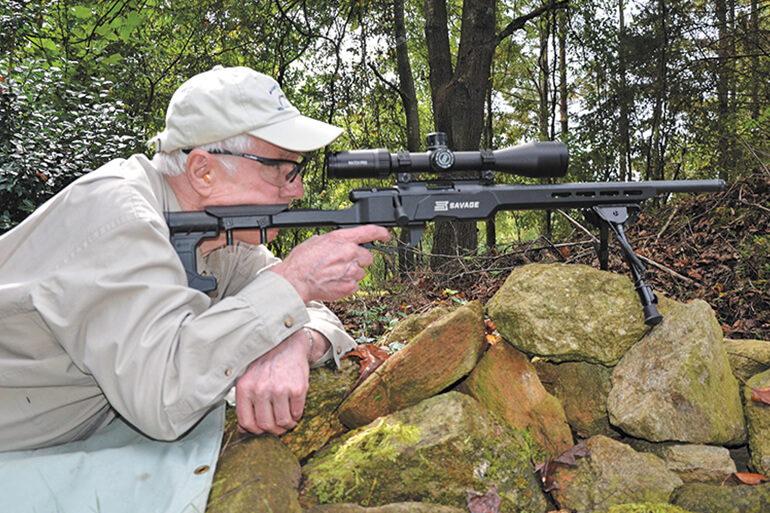
In the world of competitive shooting, where precision and speed are paramount, choosing the right shotgun can make all the difference between victory and defeat. Whether it’s skeet, trap, sporting clays, or any other shooting discipline, understanding the key features of a shotgun can give competitors a significant edge. Here, we’ll discuss the essential features that can help shooters excel in competitions and come out on top.
- Action Type:
Shotguns come in various action types, with the most common being pump-action, semi-automatic, and break-action (including over-under and side-by-side). Each action type has its advantages and disadvantages, depending on the shooter’s preference and the specific competition.
- Pump-action shotguns are known for their reliability and simplicity. They require the shooter to manually cycle the action after each shot, which can slow down the rate of fire but also provide a level of control and consistency.
- Semi-automatic shotguns, on the other hand, automatically cycle the next round after each shot, allowing for faster follow-up shots. This feature can be advantageous in competitions where speed is crucial, but it also requires proper maintenance to ensure reliable operation.
- Break-action shotguns are popular for their quick reloading and ease of maintenance. They typically have two barrels, allowing shooters to quickly switch between different chokes or loads. This versatility can be advantageous in competitions that require shooting various target presentations.
- Barrel Length and Choke System:
The length of the shotgun barrel and the choke system play a significant role in determining the spread and range of the shot pattern. For competition shooting, it’s essential to choose a barrel length and choke combination that provides the right balance between pattern density and shot spread, depending on the type of targets being engaged.
- Longer barrels tend to offer better accuracy and swing dynamics, making them ideal for shooting disciplines like trap and sporting clays, where distant targets are common. However, shorter barrels can be more maneuverable and may offer advantages in fast-paced competitions like skeet.
- The choke system allows shooters to control the spread of the shot pattern, ranging from tight constriction for longer-range targets to more open chokes for closer shots. Understanding the different types of chokes (e.g., improved cylinder, modified, full) and selecting the appropriate one for each stage of the competition is crucial for consistent performance.
- Stock Design and Fit:
The stock of a shotgun plays a critical role in ensuring proper gun fit and comfortable shooting posture. A well-fitted stock can enhance stability, reduce recoil, and improve overall shooting accuracy. When choosing a shotgun for competition, consider the following aspects of stock design and fit:
- Length of pull: The distance from the trigger to the end of the stock should match the shooter’s arm length for comfortable and consistent shouldering of the gun.
- Drop at comb and heel: The angle and height of the stock relative to the barrel can affect the shooter’s sight picture and recoil management. Adjustable comb and heel options allow for customization to suit individual preferences and shooting styles.
- Recoil pad: A soft and adjustable recoil pad can help mitigate felt recoil, reducing shooter fatigue during long competitions and allowing for faster follow-up shots.
- Sight Systems:
The sight system of a shotgun can greatly influence aiming accuracy and target acquisition speed. While traditional bead sights are sufficient for some shooting disciplines, others may benefit from more advanced sight systems, such as those found in Beretta shotguns:
- Ventilated rib: A ribbed barrel with a front bead sight provides a consistent sight picture and helps align the gun with the target. Ventilated ribs also help dissipate heat and reduce mirage during extended shooting sessions.
- Fiber-optic sights: These sights use brightly colored fibers to enhance visibility in varying lighting conditions, making them popular choices for low-light or fast-paced competitions.
- Red dot sights: Increasingly popular in competitive shooting, red dot sights offer a precise aiming point and rapid target acquisition. They are particularly advantageous for shotgun sports like practical shooting and three-gun competitions.
- Weight and Balance:
The weight and balance of a shotgun can significantly impact shooting comfort, recoil management, and swing dynamics. While lightweight shotguns are easier to carry and maneuver, heavier models tend to absorb more recoil and provide greater stability during aiming and follow-through.
- Balanced weight distribution: A well-balanced shotgun distributes its weight evenly between the barrel and the stock, allowing for smoother swings and more consistent pointing. Experimenting with different weight configurations can help shooters find the optimal balance for their shooting style and preferences.
- Porting: Some shotguns feature ported barrels, which have vents near the muzzle to redirect gases and reduce felt recoil. While porting can help control muzzle rise and improve follow-up shot speed, it may also increase noise and muzzle blast.
Conclusion:
Mastering the shotgun for competition requires careful consideration of various features and factors that contribute to performance and success on the range. From action type and barrel configuration to stock design and sight systems, every aspect of the shotgun plays a crucial role in achieving consistency, accuracy, and speed in competitive shooting disciplines. By understanding these key features and selecting the right shotgun for their needs, competitors can enhance their skills, elevate their performance, and increase their chances of winning competitions.

